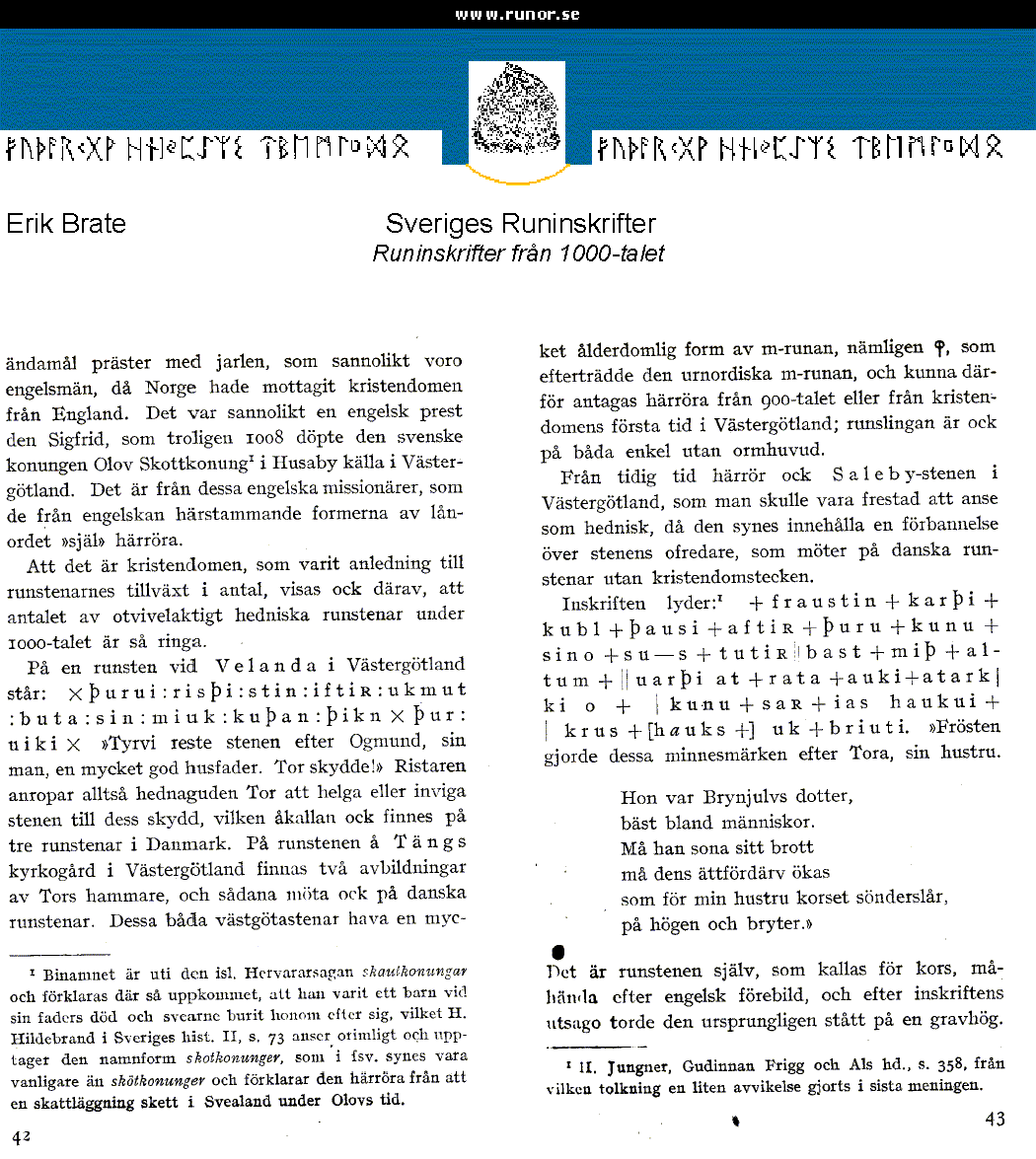
- On a runestone at Velanda in Västergötland stands: X þurui : risþi :stin : iftiR : ukmut :buta :sin : miuk :kuþan :þikn X þur: uiki X »Tyrvi raised the stone after Ogmund, her husband, a very good father of the family. Tor protects!» Carver call thus hednaguden Tor to sanctify or consecrate the stone to its protection, the invocation also exists on three stones in Denmark. On the stone of the Täng's Cemetery in Västergötland are two depictions of Thor's hammer, and they exist also in the Danish rune stones. These two Västgöta stones are very
(1) The name of skot-king comes from the Icelandic Hervarar saga skautkonungar and explained where accruing, that he was a child when his father died and the Swedes led him behind, and H. Hildebrand in Sweden hist. II, p. 73 considers unreasonable and adopt instead the name of the form skotkonunger, as in old Swedish seems to be more common than skötkonunger and explains the result from a tax orientation occurred in Svealand in Olofs time.
archaic form of m-rune, namely Î , who took over the Primitive Norse m-rune,
and could therefore be assumed to come from 900s or from Christianity's early days in Västergötland;
the run-loop is also simple but snake-head.
From an early time derived also Saleby-stone of Västergötland, who would be tempted
to regard as pagan as it appears to contain a curse on that person who destruct the stone,
which meets in the Danish rune stones without Christianity characters.
The inscription reads: (1) + fraustin + karþi + kubl+þausi+ aftiR-þuru+ kunu+ sino +su-s +
tutiR | bast + miþ+ altum+ uarpi at +rata +auki+atark | ki o
+ | kunu + saR + ias haukui + | krus +[hauks +] uk +briuti.
»Frösten did these memorials for Tora, his wife.
She was Brynjulv daughter, best among men.
Let him atone for his crime and the clan-destruction increased as
the cross for my wife break beats,
on the pile and break.»
It is the stone itself, which is called the cross, perhaps after the English model,
and after admission, the inscription probably originally stood on a mound.
(1) II. Jungner, goddess Frigg and Als hd., P. 358, from which interpretation is a small difference made in the last sentence.